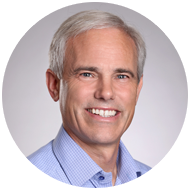The Roaring 2020s Speakeasy Team – Authors Kimberly Layne Roberts, Twiana Armstrong and Matt Schlegel – share examples of different learning styles and the role they play in tapping into your hidden potential.
Kimberly shares some personal examples and introduces Adam Grant’s book Hidden Potential. Matt shares the example of Steph Currey’s learning style as an Enneagram Type 7 and the importance of making learning fun for Type 7s. Twiana describes the role of synchronous learning and asynchronous learning.
Find more about Kimberly, Twiana and Matt here:
Kimberly Layne: https://www.kimberly-layne.com/
Twiana Armstrong: https://linkedin.com/in/twianaarmstrong
Matt Schlegel: https://evolutionaryteams.com
#Leadership #Roaring2020s #hiddenpotential #stephcurrey #enneagram #learningstyles
Transcript
[Kimberly Layne]
Are you a self-learner, a self-starter, somebody who teaches themself? I can remember when I was in elementary school, I taught myself to French braid my hair. Now, how many hours and how many days? I sat in front of the mirror before it was good enough to wear to school that day. As a teenager, I taught myself how to cook as both mom and dad were working and to assist our five-person family.
In high school, I was quite shy and introverted, and I taught myself how to be social and preparation for my college years. It changed my life. I taught myself emotional intelligence and psychology, which has become a key component of my executive coaching and energy healing practice. Yes, I was an initiative taker.
When I see a roadblock, I usually find a way around it. You just have to be creative enough to figure it out and find ways to learn. I’m not saying it was easy, that I got it right the first time. I certainly was uncomfortable, especially in becoming a more sociable and extroverted person in college. If I really look at the scenario, I suspect I probably was a self-starter merely as part of my survival because I felt as a child I could not trust anyone, and I could not rely on anyone else for help.
So, as a consequence, I became a self-starter. Being a self-starter and allowing yourself to be uncomfortable. These are the traits, according to Adam Grant and his book Hidden Potential, that are keys to success . After all, according to Ted Lasso, if you’re not uncomfortable, you’re not doing it right. Matt, what are your thoughts on this topic?
[Matt Schlegel]
Oh, thanks, Kimberly. Those are great stories, and I wish you would have braided your hair for this.
[Kimberly Layne]
I was thinking about it so…
[Matt Schlegel]
You know, another really great example that Adam Grant brings up in his book, Hidden Potential is the story of Steph Curry. And he says that Steph Curry wasn’t really that great of a player when he was younger, but then he teamed up with a coach who really understood Steph’s learning style and crafted a training plan that was suited to that.
Now I have a friend who is a professional basketball player who also knows the Enneagram, so he’s pretty sure that Steph Curry is an Enneagram Type 7 and Enneagram Type 7s need to have fun. So if you can have fun while you’re learning Type 7s will just do better. And this coach identified that and created fun games for Steph to use to learn to shoot three pointers. And that was so effective that Steph Curry became the best three point shooter on the planet. So understanding your own learning style and when when necessary, teaming up with somebody who can help you do that and help you become more effective in your learning style is also a great way to learn. Tswana. What are you thinking about? Emily and Matt?
[Twiana Armstrong]
Both of you provide concrete, descriptive and experiential examples of how leaders learn. Kimberly Your examples lends itself to a type of asynchronous learning driving a development plan based on your self-awareness that you need it to change your learning environment. You built are developed a process that met your needs without the need to interact with a coach or a pseudo instructor.
Matt. The Steph Steph Curry example lends itself to synchronous learning, which can be described as instructor led or in this case, coach led. The coach identified a style of learning that fulfilled Steph self awareness. The need for the learning environment to be fun and the rest, as we say, is history. Self-Aware leaders do the work. They determine their learning style, be it asynchronous a type of education that allows one to learn at your own pace, your own schedule, and you direct the curriculum burst the synchronous learning and environment where learners and instructors come together at a specific time and progress through the curriculum at the same pace.
Therefore, world leaders know that understanding their their learning style is fundamental to their ability to lead. See the links below for more information about being an asynchronous learner versus a synchronous learner.
